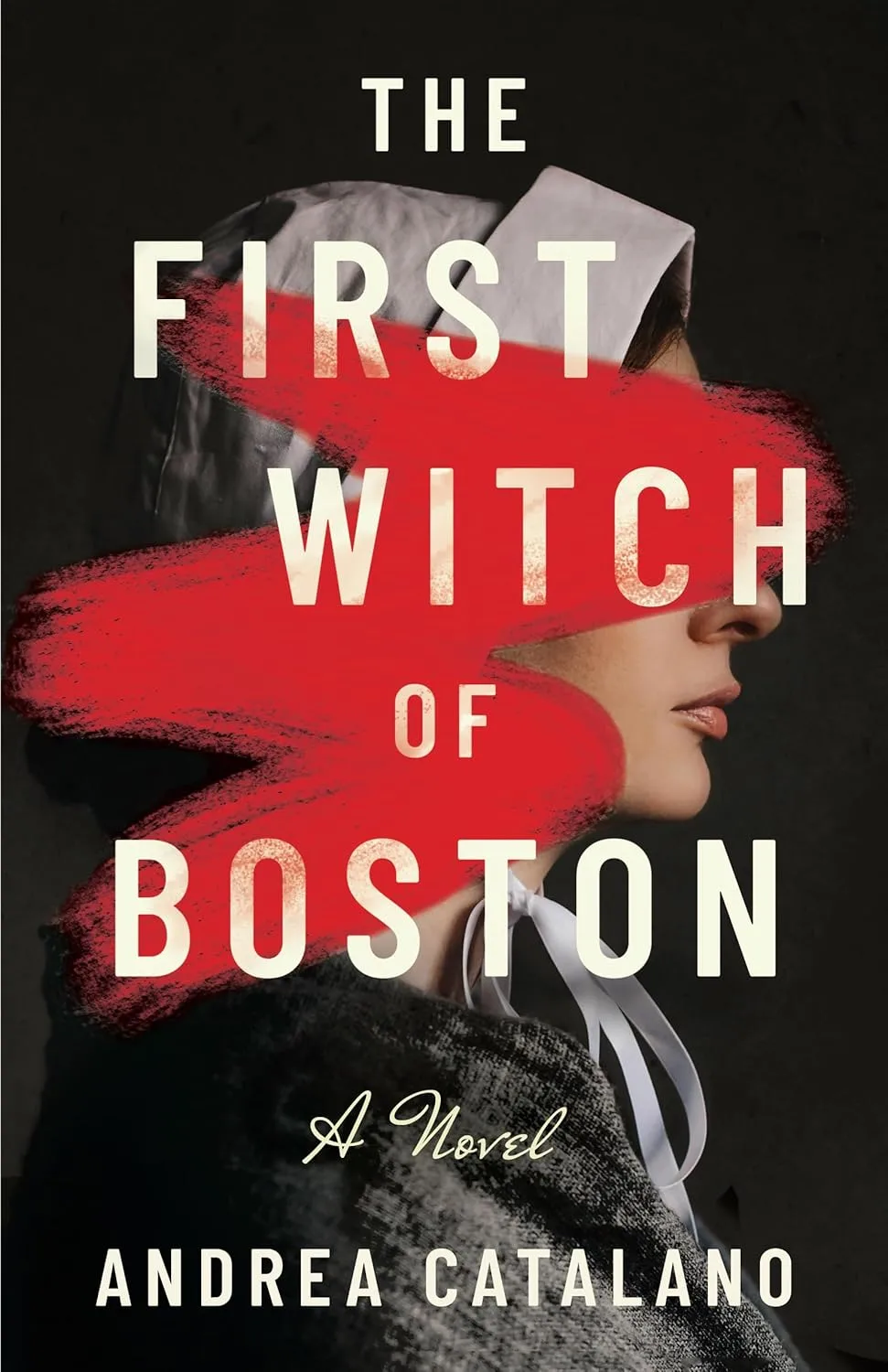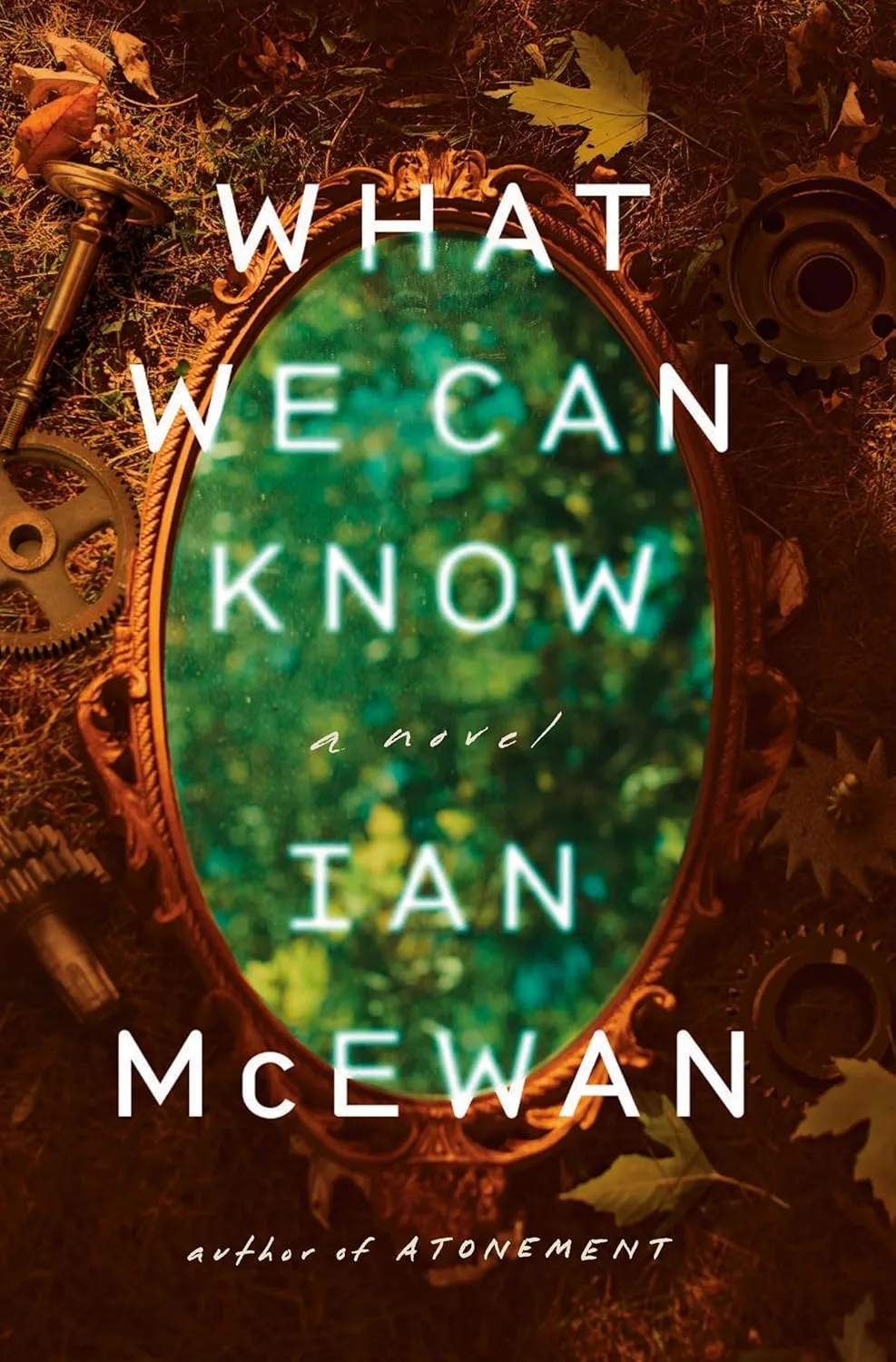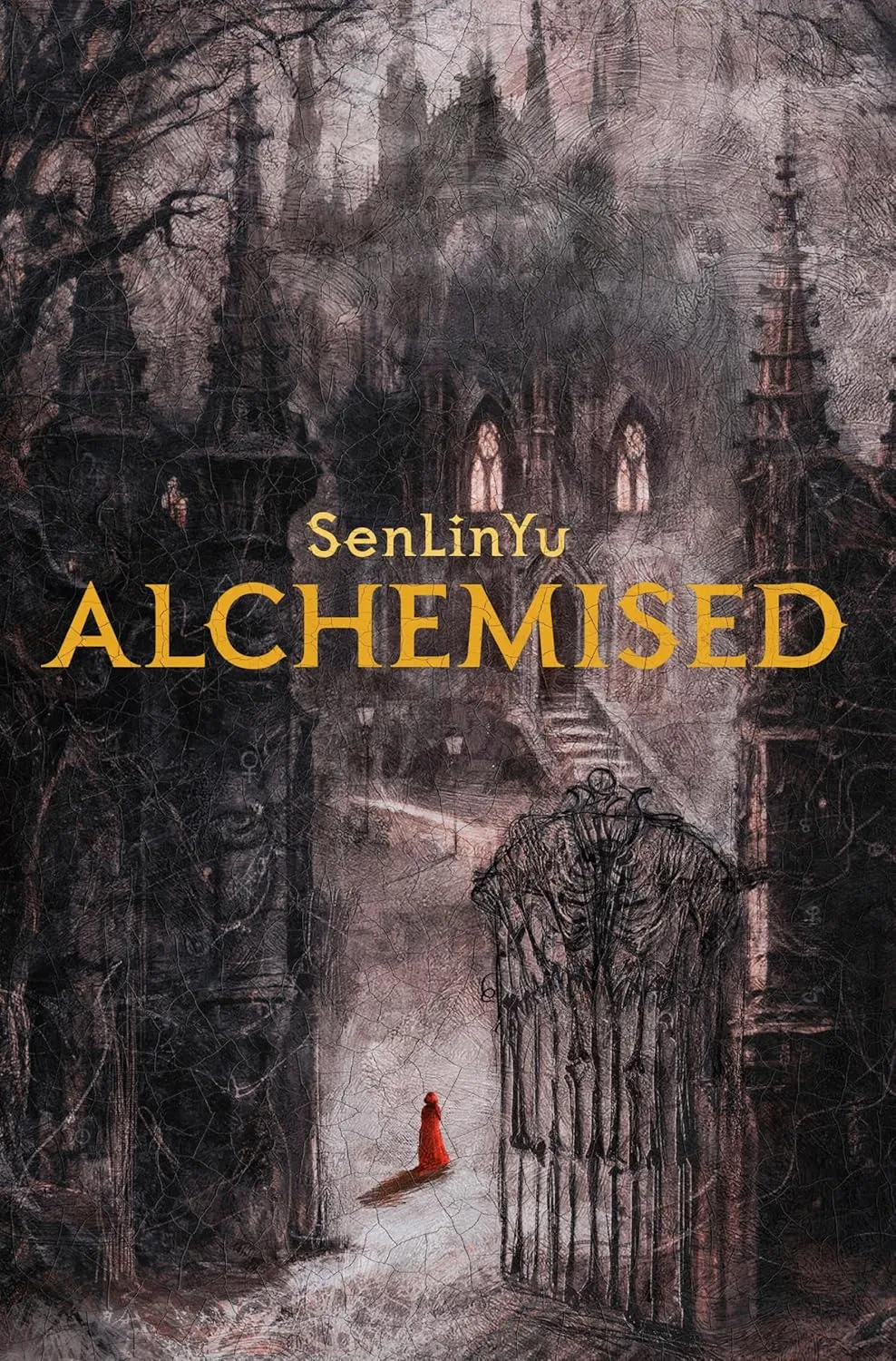Overview
The First Witch of Boston is a gripping historical novel that brings to life the true story of Margaret Jones, the first woman to be tried, convicted, and executed for witchcraft in Massachusetts Bay Colony in June 1648. Based on actual diary entries from Governor John Winthrop and historical court records, this debut novel by Andrea Catalano explores the intimate world of Margaret “Maggie” Jones and her husband Thomas, whose nearly twenty-year marriage is tested by the superstition, repression, and religious intolerance of Puritan New England. Through Maggie’s discovered journals and Thomas’s memories, the novel spans their life together from rural England to London to Charlestown, Massachusetts, revealing a powerful love story set against one of the darkest chapters in American history.
Key Takeaways
| Aspect | Details |
|---|---|
| Genre | Historical Fiction, Women’s Historical Fiction, Biographical Fiction |
| Setting | Massachusetts Bay Colony (Charlestown), 1646-1648; flashbacks to England |
| Publication | September 1, 2025 (Lake Union Publishing, Amazon Publishing) |
| Main Focus | The life, trial, and execution of Margaret Jones, the first witch executed in Boston |
| Historical Basis | True story documented in Governor John Winthrop’s diary and court records |
| Narrative Structure | Dual timeline: Maggie’s journal entries and Thomas’s third-person POV memories |
| Core Conflict | An outspoken herbalist and midwife faces witchcraft charges in a community fueled by fear and superstition |
| Themes | Gender norms, religious persecution, power of love, injustice, historical memory |
Book Structure
The novel employs a unique dual narrative structure that reveals the story through two interconnected voices:
Framing Device: Discovery
The story is told as a flashback, with Maggie already dead at the start. Thomas discovers Margaret’s journals after her execution, leading him to revisit their life together from beginning to tragic end.
Maggie’s Journal Entries
Margaret’s own words, written from when she first met Thomas through to her final days, provide an intimate first-person account of her thoughts, experiences, and observations. These entries reveal her intelligence, wit, independence, and the struggles she faced as a woman who refused to conform.
Thomas’s Memories (Third-Person POV)
Thomas’s perspective fills in the broader context, showing their life together from an external viewpoint and providing insight into the social and political forces that ultimately destroyed their happiness.
Chapter Headings: Winthrop’s Words
Many chapters begin with excerpts from Governor John Winthrop’s journal—one of only two primary sources about Margaret Jones that still exist. These historical fragments provide the “official” colonial view of Maggie, contrasting sharply with her own voice and creating dramatic irony.
Geographic and Temporal Arc
Part One: England (Early Years)
- Rural Berkshire: Where Thomas and Maggie’s relationship begins
- London: Their life in the bustling city before circumstances force them to leave “under something of a cloud”
Part Two: The New World (1646-1648)
- Charlestown, Massachusetts: Building a new life in the strict Puritan community
- The tension between Maggie’s gifts and the community’s suspicions
- The accusations, trial, and inevitable tragic conclusion
About the Author
Andrea Catalano is a debut novelist whose first work demonstrates meticulous historical research and a poet’s sensibility for language. Her interest in giving voice to marginalized women in history—particularly those falsely accused and executed for witchcraft—drives this compelling narrative. Catalano’s background in historical research is evident in her authentic portrayal of 17th-century Puritan life and her incorporation of primary source materials.
The author approaches Margaret Jones’s story with both scholarly rigor and deep empathy, transforming court records and diary entries into a fully realized human drama. Her debut has been praised for bringing to life “an era fueled by superstition, repression, and intolerance” while maintaining the intimate focus on a marriage tested by impossible circumstances.
Why This Book Resonates
Giving Voice to the Silenced: Margaret Jones “deserved a better fate than the one history dealt her,” and Catalano’s novel restores her humanity, transforming her from a footnote in history books into a fully realized woman with dreams, fears, loves, and agency.
Timeless Themes of Persecution: The mechanisms of Margaret’s persecution—gossip, fear, scapegoating, the targeting of women who don’t conform—feel disturbingly relevant to contemporary discussions of misogyny, religious extremism, and mob mentality.
Women’s Knowledge as Threat: Maggie’s skills as an herbalist and midwife—her medical knowledge and intuitive understanding of people—are precisely what make her dangerous to a patriarchal society that demands female submission and silence.
Love in Impossible Circumstances: At its heart, this is a love story. Despite differing temperaments, Thomas and Margaret are “bound by a love that has lasted almost twenty years,” and the novel explores whether that love can survive external persecution and internal secrets.
The First of Many: Margaret Jones’s 1648 execution preceded the Salem Witch Trials by 44 years. Understanding her story provides crucial context for the hysteria that would later consume Salem and reveals how the patterns of persecution were established early in colonial history.
Historical Injustice and Memory: The novel participates in the important work of remembering women whose stories have been erased or distorted by those who condemned them.
Ideal Audience
Perfect for readers who enjoy:
- Historical fiction based on true stories
- Witch trial narratives and colonial American history
- Books about strong women who defied societal expectations
- Intimate character studies and love stories
- Novels that incorporate primary historical documents
- Stories exploring religious persecution and injustice
- Dual timeline narratives
- Authors like Ariel Lawhon (The Frozen River), Chris Bohjalian (The Hour of the Witch), Stacy Schiff (The Witches), and Kathleen Kent (The Heretic’s Daughter)
Also appeals to:
- Readers interested in women’s history and medical history (midwifery, herbalism)
- Those fascinated by Puritan New England
- Fans of biographical fiction
- Anyone interested in early American witch trials before Salem
- Readers who appreciate meticulously researched historical detail
- Those who enjoy journal/diary-based narratives
Memorable Quotes
From Olivia Hawker, bestselling author: “Between her gorgeous prose and her endearing characters, Andrea Catalano has established herself as one of the most exciting new authors in historical fiction.”
From Historical Novels Review: “Catalano’s character and world-building ably bring to life an era fueled by superstition, repression, and intolerance…I can see this book appealing to the many fans of Ariel Lawhon’s The Frozen River and Chris Bohjalian’s Hour of the Witch.”
From early reviews: “A rare and powerful debut—one that will hold you in thrall from beginning to end. Catalano gives voice to all the passion, anguish, and injustice surrounding the life and death of a woman who deserved a better fate.”
Central Themes
| Theme | Exploration in the Novel |
|---|---|
| Gender and Power | Maggie’s outspokenness and refusal to conform to gender norms make her a target; explores how patriarchal societies police women’s behavior and knowledge |
| Religious Intolerance | The rigid Puritan worldview that sees Satan’s influence everywhere; how religious certainty becomes weaponized against difference |
| Knowledge as Danger | Maggie’s skills as herbalist and midwife—her medical expertise and intuition—are reframed as witchcraft; women’s knowledge threatening to male authority |
| Love and Marriage | The complex, believable marriage between Thomas and Maggie; how couples navigate different temperaments and external pressures |
| Secrets and Truth | Both Thomas and Maggie harbor secrets; explores whether full honesty is always possible or desirable in a relationship |
| Community and Persecution | How “hidden fears, hypocrisies, petty jealousies, and superstitions in the community come roaring to life” when witch accusations begin |
| Historical Memory | Who gets to tell history? How do we recover the voices of those condemned by official records? |
| Superstition vs. Science | Maggie’s empirical knowledge of herbs and healing vs. the community’s belief in supernatural evil |
| Immigration and Identity | Starting over in a new world; the hope and reality of colonial life |
| Justice and Injustice | The trial process guided by Matthew Hopkins’s The Discovery of Witches; what passes for evidence in an unjust system |
Character Profiles
Margaret “Maggie” Drinkwater Jones – The Accused
A gifted herbalist and midwife who is “an outspoken character” with “the uncanny knack of reading people’s characters and spotting signs of health issues—a pregnancy for example—before the person even knows of it themselves.” Born in 1613, Maggie possesses intelligence, independence, and a contemporary woman’s outlook that makes her fundamentally incompatible with Puritan gender expectations. She is “a talented herbalist and midwife” with “a contemporary woman’s outlook and feels she shouldn’t have to conform to anyone else’s view of womanhood. Not even her husband’s.”
Character Essence: A woman ahead of her time whose gifts make her invaluable and dangerous in equal measure.
Thomas Jones – The Devoted Husband
A skilled carpenter and furniture-maker who loves his wife deeply despite their different temperaments. Thomas must navigate his loyalty to Maggie against the social pressures of their Puritan community. After her death, his discovery of her journals forces him to confront what he knew and didn’t know about the woman he loved for nearly twenty years.
Character Arc: From protective husband to witness to the limits of his protection; from grief to understanding through reading his wife’s own words.
Governor John Winthrop
The historical figure whose diary provides one of only two existing accounts of Margaret Jones. His perspective represents official Puritan authority and its view of Maggie as a dangerous witch rather than a skilled healer.
The Young Widow
A woman who “takes a liking to Thomas, and isn’t above a trick or two to snare a married man,” her actions set in motion the accusations that lead to Maggie’s downfall. Represents the role of personal jealousy and romantic rivalry in fueling witch accusations.
The Puritan Community
The collective character of Charlestown’s residents—fearful, superstitious, intolerant, and quick to see Satan’s work in anything that challenges their rigid worldview.
Historical Context
Massachusetts Bay Colony in the 1640s The novel is set during the early decades of Puritan settlement in New England. The Massachusetts Bay Colony was founded in 1630 by Puritans seeking religious freedom, but their vision of freedom didn’t extend to dissent or difference within their own community.
Margaret Jones (1613-1648) The historical Margaret Jones was a real woman executed on June 15, 1648, in Boston—making her the first person executed for witchcraft in Massachusetts, 44 years before the Salem Witch Trials began. The historical record is sparse, consisting primarily of Governor Winthrop’s diary entries and court records.
Evidence Against Her According to historical records, Margaret was accused of:
- Having a “malignant touch” that made people ill
- Possessing knowledge of diseases before symptoms appeared
- Using “physick” (medicine) that had violent effects
- Having an “imp” (familiar spirit) that could be seen by witnesses
- Denying guilt despite examination
Matthew Hopkins and Witch-Finding Margaret’s trial was largely guided by the work of Matthew Hopkins, who held the office of Witchfinder General in England and had recently published The Discovery of Witches (1647), with guidelines on how to identify a witch. This manual provided the template for examining suspected witches, including humiliating physical examinations searching for “witch’s marks.”
The Legal Process The novel explores “the role of gossip, what the court accepted as solid evidence, the role Satan supposedly played, the humiliating examinations performed on the accused, suspicions that could be verified by a pet cat, and the way peer pressure influenced final judgment.”
Gender and Medical Practice In the 17th century, women’s knowledge of herbs, midwifery, and healing was both essential and suspect. Women like Margaret who possessed medical knowledge that couldn’t be easily explained threatened the emerging professional medical establishment (male physicians) and challenged the religious understanding that saw illness as divine punishment or demonic influence.
Critical Reception
The novel has received strong praise for its historical authenticity and emotional depth, particularly from readers who appreciate meticulously researched historical fiction.
Positive Reception:
- Historical Novel Society praised Catalano’s ability to make “unimaginable” witch-hunts comprehensible through “character and world-building [that] ably bring to life an era fueled by superstition, repression, and intolerance”
- Reviewers have highlighted the sensitive handling of grief and tenderness in Thomas and Maggie’s marriage
- The incorporation of primary source materials (Winthrop’s diary) adds authenticity and dramatic irony
- Comparisons to successful witch trial novels like The Frozen River and The Hour of the Witch suggest strong market appeal
Mixed Elements:
- Some readers found that “knowing that Maggie was dead from the beginning of the book…certainly diminishes any building suspense”
- The framing device that reveals the ending upfront works for some readers (creating tragic inevitability) but frustrates others seeking traditional narrative tension
- Pacing preferences vary—some readers appreciate the intimate focus while others desire more dramatic momentum
Target Audience Success: The novel resonates strongly with readers who enjoy:
- Character-driven historical fiction over plot-driven thrillers
- Deeply researched portrayals of specific historical periods
- Stories that give voice to marginalized historical figures
- Exploration of how historical injustice operated
The Narrative Device: Why Start with the Ending?
The novel’s choice to reveal Maggie’s fate from the beginning is deliberate and serves multiple purposes:
- Historical Truth: Margaret Jones’s execution is historical fact. The novel isn’t mystery about “what happened” but exploration of “who was she” and “how did it happen”
- Tragic Inevitability: Like Greek tragedy, knowing the ending creates dramatic irony that heightens every moment of happiness or hope
- Shifting Focus: By removing suspense about survival, the novel can focus on relationship dynamics, social commentary, and the intimate details of daily life
- Thomas’s Grief: The discovery-of-journals framing makes this a story about Thomas processing loss and truly knowing his wife for the first time through her own words
- Honoring the Victim: Starting with Margaret’s death ensures readers never forget this is a real woman who was really killed, preventing her story from being consumed as entertainment divorced from its tragic reality
Writing Style and Literary Merit
Catalano brings a poet’s sensibility to historical fiction, with prose praised as “gorgeous” and “lyrical.” The dual narrative structure—Maggie’s journal entries and Thomas’s third-person memories—creates intimacy while maintaining historical distance.
The incorporation of Winthrop’s actual diary entries at chapter openings is a sophisticated technique that:
- Grounds the fiction in documentary evidence
- Creates contrast between “official history” and lived experience
- Shows how women’s voices were erased or distorted by male authorities
- Adds layers of interpretation for readers to navigate
The novel demonstrates careful attention to period detail without overwhelming readers with exposition, allowing the story to emerge naturally from authentic historical context.
Discussion Questions for Book Clubs
- How does the novel’s structure (starting with Maggie’s death and using her discovered journals) affect your reading experience? Does it create more emotional impact or diminish suspense?
- What modern parallels do you see to the way Maggie’s knowledge and outspokenness made her a target in Puritan society?
- How does Thomas’s love for Maggie both protect and fail to protect her? What are the limits of personal love against systemic injustice?
- The novel incorporates Governor Winthrop’s actual diary entries. How does reading his perspective alongside Maggie’s story change your understanding of “historical truth”?
- What role does gender play in the witch accusations? Would a male herbalist and healer have faced the same charges?
- How does the young widow’s jealousy contribute to the accusations? What does this reveal about how personal grievances become entangled with religious persecution?
- What secrets do Thomas and Maggie keep from each other? Are these secrets protective or destructive to their marriage?
- How does the novel portray the Puritan community—as uniformly hostile, or with more complexity?
- The title calls Maggie “The First Witch of Boston.” Why do you think Catalano chose to use the word “witch” when Maggie was falsely accused?
- What do you think Catalano wants readers to take away from Margaret Jones’s story? What does it mean to recover and honor these erased women’s voices?
- How does reading about Margaret Jones change your understanding of the later Salem Witch Trials?
- If you could add one element to the historical record about Margaret Jones, what would you want to know?
FAQ
Q: Is this book historically accurate? A: The novel is based on true firsthand accounts from John Winthrop’s diary and historical Massachusetts Bay Court records. While the intimate details of Margaret and Thomas’s relationship are fictionalized, the framework—who they were, what Margaret was accused of, the trial, and execution—are historically documented.
Q: Is this connected to the Salem Witch Trials? A: Margaret Jones was executed in 1648, 44 years before the Salem Witch Trials began in 1692. Her case helped establish the template and precedent for how witch accusations would be handled in Massachusetts.
Q: Is the book scary or contains horror elements? A: It’s not horror in the supernatural sense. The horror is historical and human—the frightening reality of how easily a woman could be condemned to death based on superstition and fear. There are descriptions of trial procedures and examinations that some may find disturbing.
Q: Does the novel suggest Margaret actually had magical powers? A: The novel mentions “moments of inexplicable and other-worldly magic,” leaving some ambiguity, but primarily portrays Margaret as an intelligent woman with medical knowledge that was misinterpreted as witchcraft.
Q: Is this appropriate for younger readers? A: The novel deals with mature themes including execution, persecution, and the humiliating examinations of accused witches. It’s most appropriate for adult readers or mature teens.
Q: How does this compare to other witch trial novels? A: Reviewers compare it favorably to Ariel Lawhon’s The Frozen River and Chris Bohjalian’s Hour of the Witch, suggesting it will appeal to fans of those novels with its intimate character focus and meticulous historical detail.
Q: Do I need to know a lot about Puritan history to enjoy this? A: No. The novel provides sufficient context while keeping the focus on the human story. Readers will learn about the period through the narrative rather than through exposition.
Q: Is there a happy ending? A: The historical outcome cannot be changed—Margaret Jones was executed. However, the novel explores themes of love, memory, and how we honor those we’ve lost, which provides a different kind of resolution.
Final Thoughts
The First Witch of Boston is a powerful debut that transforms a brief footnote in colonial history into a fully realized human tragedy. Andrea Catalano has accomplished something remarkable: she has restored dignity, voice, and complexity to a woman whom history reduced to a few diary entries and court records.
What makes this novel significant is not just its meticulous research or its beautiful prose, but its insistence that Margaret Jones matters—that her life, her love, her knowledge, and her unjust death deserve to be remembered and mourned. In an era when women’s bodies, autonomy, and expertise remain contested territory, Margaret’s story resonates with uncomfortable contemporary relevance.
The novel refuses easy answers. It doesn’t simplify the Puritans into cartoon villains, nor does it sanitize the real brutality of what happened. Instead, it shows how fear, superstition, jealousy, and rigid ideology combined to create a system in which an innocent woman’s death became not just possible but inevitable. The mechanisms that destroyed Margaret—gossip as evidence, difference as danger, women’s knowledge as threat—didn’t disappear with the 17th century.
Catalano’s choice to structure the novel around Thomas discovering Maggie’s journals after her death adds emotional resonance. This is a story about grief, about truly knowing someone only after they’re gone, about the limits of love in the face of societal forces beyond individual control. The dual timeline allows readers intimate access to Maggie’s inner life while maintaining the broader historical perspective that shows how individual tragedy fits into larger patterns of persecution.
For readers who appreciate historical fiction that doesn’t just recreate the past but interrogates it—that asks uncomfortable questions about how we treat difference, how we scapegoat the vulnerable, how easily justice can be corrupted by fear—The First Witch of Boston delivers a compelling, heartbreaking, and ultimately necessary story.
This is not just Margaret Jones’s story. It’s the story of all the women whose knowledge was called witchcraft, whose independence was punished as rebellion, whose voices were silenced by those who wrote the official histories. Catalano has given one of them back her voice, and in doing so, reminds us to listen for all the others still waiting to be heard.
Rating Consensus: ★★★★ (4/5 stars based on early reviews)
Content Warnings
- Execution (non-graphic but present)
- Witch trial procedures including humiliating physical examinations
- Religious persecution and intolerance
- Death of a main character (known from the beginning)
- Historical misogyny and gender-based violence
- Grief and loss
- False accusations and injustice
Links
- More Summaries
- Publisher: Lake Union Publishing (Amazon Publishing)
- Author Website: Andrea Catalano
- Historical Context:
- Margaret Jones – Wikipedia
- Matthew Hopkins & The Discovery of Witches (free historical text)
- John Winthrop’s Journal







